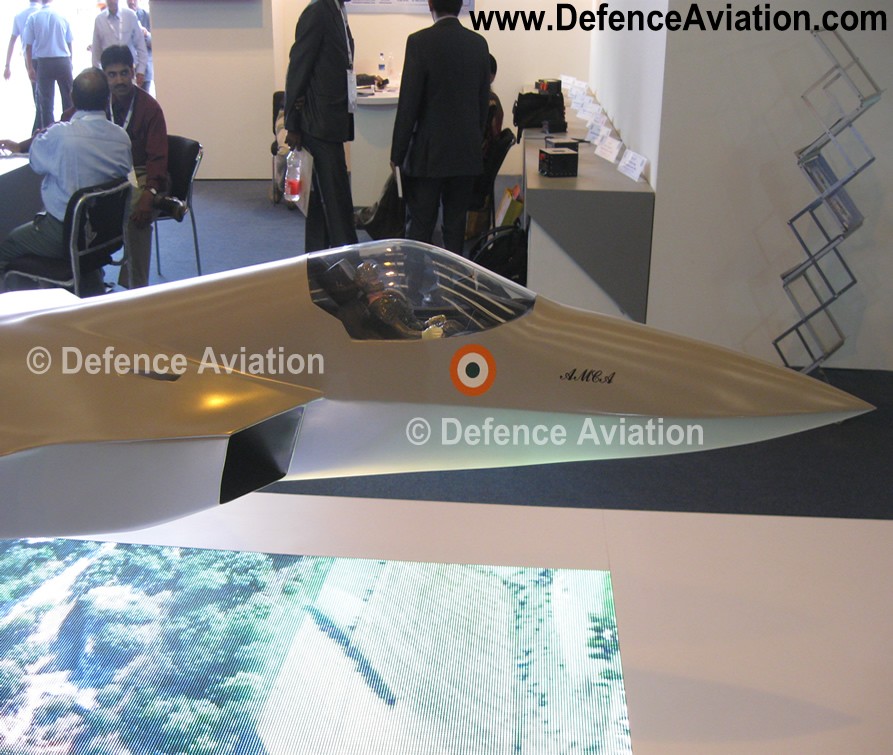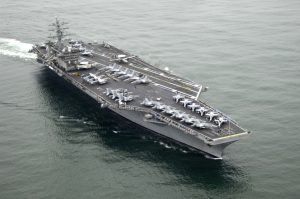In Aero India 2013, India has publicized an updated design for its 5th generation fighter concept AMCA (Advanced Medium Combat Aircraft). Formerly this aircraft was known as the MCA (Medium Combat Aircraft). It is a single seat twin engine 5th generation stealth multirole fighter that is being developed by India. This fighter is supposed to complement the eminent fighters like the Sukhoi/HAL FGFA, HAL Tejas, the Dassault Rafael and the Sukhoi Su-30MKI. Unofficial blueprint related work on this aircraft has been started. In fact a marine version is also confirmed as the Indian Navy contributed to its funding too. In Aero India 2013 the ADA revealed a 1:8 scale model.
This aircraft is being designed as a reasonable fighter together with swing role facility in order to meet the necessities of the IAF post 2020. It will have technologies like super cruise, super maneuverability, advanced sensor suit with fusion and stealth as its features.
Design of AMCA:
The design of the AMCA includes a very small radar cross-section & will also have serpentine like air intakes, internal arsenal as well as the state-of-the-art radomes in order to enhance its stealth feature. The design will also be supplemented through radar-absorbing composites as well as paints.
AMCA will be a twin-engine design. It features the GTX Kaveri engine with thrust vectoring. There is possibility that it will give the aircraft the capabilities of supercruise. The design based stealth characteristics of the aircraft will include additional optimized edge matching, airframe shaping, body confirming antennae & a low IR signature all the way through nozzle design, engine bay cooling as well as work on decreased exhaust temperature. With advanced sensors the aircraft will be loaded with missiles like DRDO Astra along with some other superior missiles, standoff weaponry as well as precision weapons. The aircraft will feature the ability to deploy Precision Guided Munitions. It will also feature extensive detection range as well as targeting range with the capacity to release arsenals t supersonic speed. The avionics suite of the aircraft will consist of AESA radar, IRST along with suitable electronic warfare systems as well as all feature missile-warning-suite.
The Air-Air Combat Abilities of the Aircraft Include:
Long Range Combat
- Supercruise
- Low Radar Signature
- Supersonic weapon release
- Extended detection range and targeting
Short Range Combat
- Thrust Vectoring
- Low IR signature
- High AOA controllability
- All aspect missile warning system
Air-Ground Capabilities
- Stealth Missions
- Special missions
- Precision strike
- Suppression of Enemy Air Defense (SEAD)
Non Stealth Missions
- Maritime strike
Sensor Suite
- IRST
- AESA radar
Weapon Suite
- JDAM
- BVR Missile
- PGM
- Close Combat Missile
Survivability
- Electronic Warfare
- Stealth
Features
- Internal Weapons
- Shaping for Low Observability (LO)
- Signature Control
- Situational Awareness
- Integrated Modular Avionics
- Future Missiles
- Data Fusion
- Precision Weapons
- Stand-Off Weapons
- Advanced Sensor
- Appropriate EW
- Vehicle Management
- Net Centric warfare





